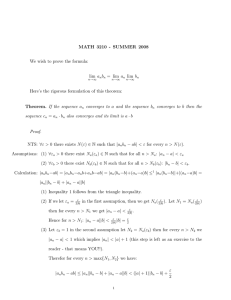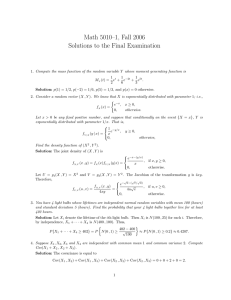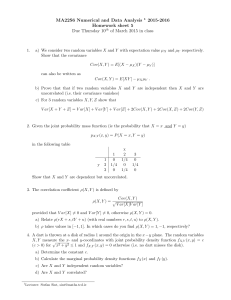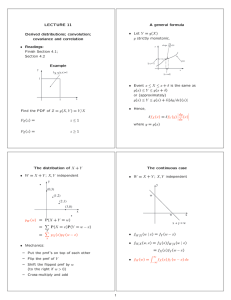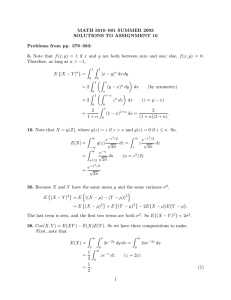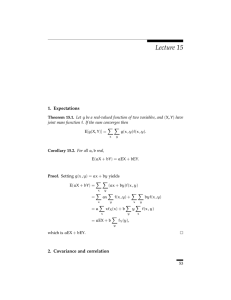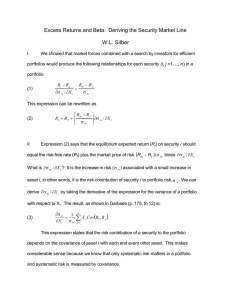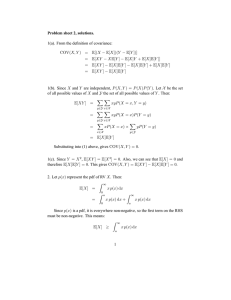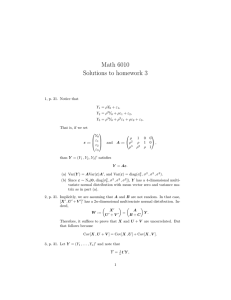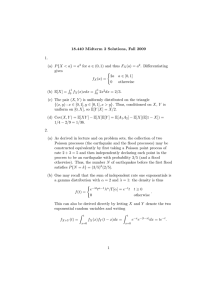Problem sheet 2 is defined as:
advertisement
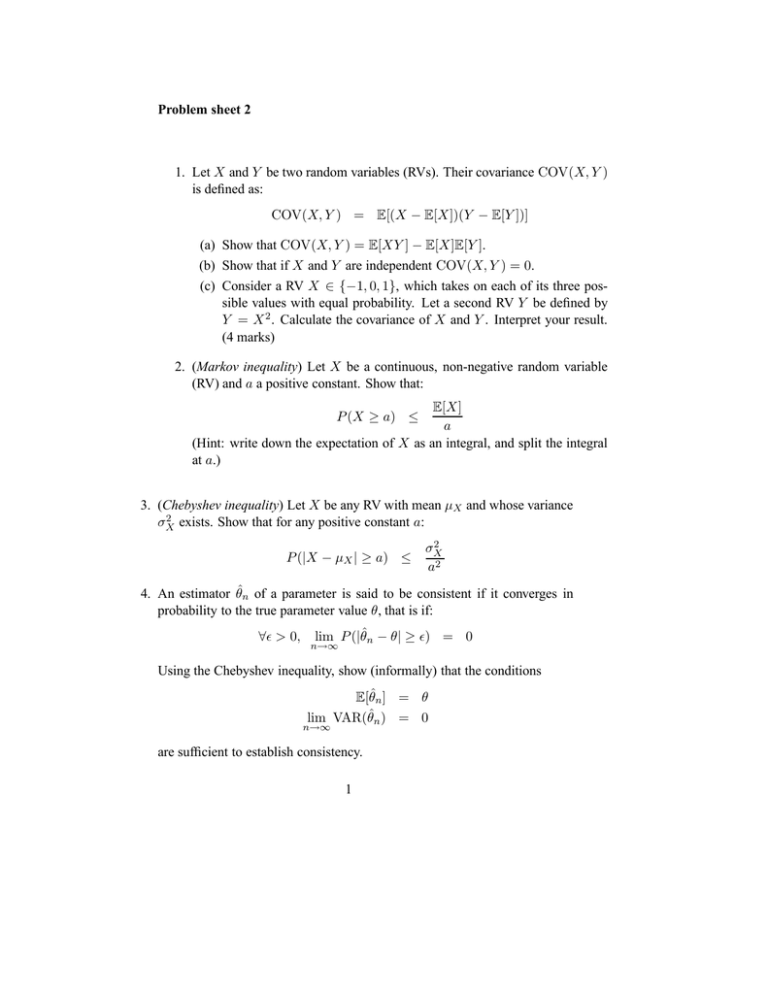
Problem sheet 2
1. Let X and Y be two random variables (RVs). Their covariance COV(X, Y )
is defined as:
COV(X, Y ) = E[(X − E[X])(Y − E[Y ])]
(a) Show that COV(X, Y ) = E[XY ] − E[X]E[Y ].
(b) Show that if X and Y are independent COV(X, Y ) = 0.
(c) Consider a RV X ∈ {−1, 0, 1}, which takes on each of its three possible values with equal probability. Let a second RV Y be defined by
Y = X 2 . Calculate the covariance of X and Y . Interpret your result.
(4 marks)
2. (Markov inequality) Let X be a continuous, non-negative random variable
(RV) and a a positive constant. Show that:
E[X]
a
(Hint: write down the expectation of X as an integral, and split the integral
at a.)
P (X ≥ a) ≤
3. (Chebyshev inequality) Let X be any RV with mean µX and whose variance
2 exists. Show that for any positive constant a:
σX
P (|X − µX | ≥ a) ≤
2
σX
a2
4. An estimator θ̂n of a parameter is said to be consistent if it converges in
probability to the true parameter value θ, that is if:
∀ > 0,
lim P (|θ̂n − θ| ≥ ) = 0
n→∞
Using the Chebyshev inequality, show (informally) that the conditions
E[θ̂n ] = θ
lim VAR(θ̂n ) = 0
n→∞
are sufficient to establish consistency.
1
5. (Law of Large Numbers) Let X1 , X2 . . . Xn be a set of independently and
identically distributed RVs (a random sample) with E[Xi ] = µX and VAR(Xi ) =
2 < ∞. Show that the sample mean
σX
1X
Xi
n
n
X̄ =
i=1
converges in probability to the mean µX .
6. X1 . . . Xn , Xi ∈ Rd are independently and identically distributed multivariate Normal random vectors, each having pdf:
p(x | µ, Σ) =
1
(2π)d/2 |Σ|1/2
−1
1
T
e− 2 (x−µ) Σ (x−µ)
(a) Write down the log-likelihood function for this model.
(b) Derive maximum likelihood estimators for the parameters µ and Σ.
(The easiest way to solve this problem is using matrix derivatives. See
Appendix C in Bishop for an introduction. You may also find the note
“Matrix Identities” by Roweis useful; this is available on the course
website. The derivatives
∂
log(|A|) = (A−1 )T
∂A
∂
Tr(X−1 A) = −X−1 AT X−1
∂X
may prove particularly useful. Here, Tr(·) denotes the trace of its matrix argument. )
2

